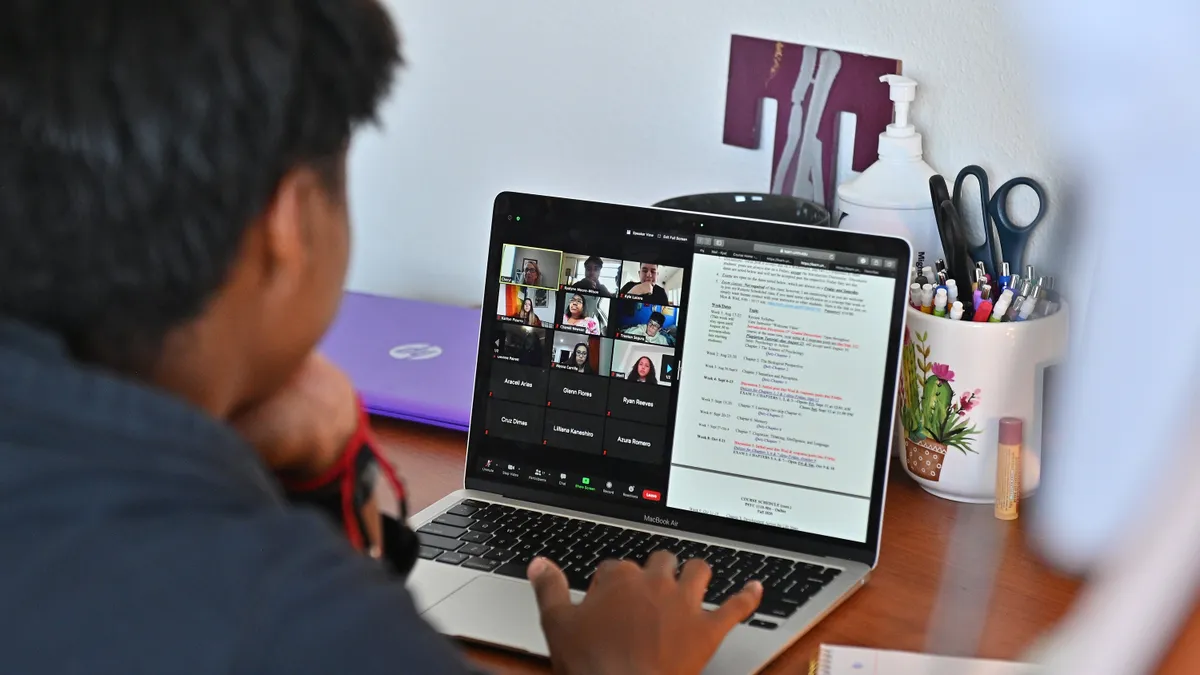Dive Brief:
- More than 1 in 8 undergraduate students who live off campus lack consistent access to broadband internet and instead rely on a cellular data plan, a new working paper from University of Florida researchers reported.
- Access varied greatly by students' race and location, according to the paper, posted as part of a prepublication series by Brown University's Annenberg Institute. When broken down by race and ethnicity, the median student's access to in-home broadband varied by 33.6 percentage points, from a high of 93.3% among White and Chinese students to a low of 59.7% among Navajo students.
- In North Dakota, 9.4% of undergraduates relied on cellular data, 4.1 percentage points less than the national median of 13.5%. In Mississippi, that share rose to 24.3% of students, a 10.8 percentage point jump over the national median.
Dive Insight:
Corners of higher education have long focused on emerging ed tech and virtual learning. But when the COVID-19 pandemic caused a temporary pivot to remote-only options, colleges — especially those in rural areas — found many of their students lack consistent internet access. Without a reliable connection, students may have to rely on cellphone data, which can be slow and expensive.
Roughly 19 million U.S. residents don't have access to broadband internet, according to the Federal Communications Commission. In rural areas, it's unavailable for 1 in 4 people. The FCC defines broadband service as having minimum download speeds of 25 megabits per second or more.
The new working paper, which has yet to be peer reviewed, found that inequities in student internet access demonstrate the need for lawmakers and college leaders to target broadband policies based on nuanced data.
Researchers recommend that state and federal leaders offer broadband subsidies to people with limited internet access, prioritizing those in areas historically denied infrastructure improvements. In addition, college leaders should calculate a student's financial need with the cost of broadband in mind, they suggest.
The paper found undergraduate students experience inequitable access to broadband not just by location, but also by race. Researchers analyzed American Community Survey data from 2016 to 2019, representing over 56 million undergraduate students living off campus.
Students who identified as Navajo are 18.8 percentage points more likely than the national median to rely on cellular data plans. Those who identified as White and Chinese were 7 percentage points less likely to do so.
Researchers also discovered significant differences within broad racial and ethnic groups like Asian and Hispanic.
For instance, Asian undergraduates living off campus were more likely to have broadband access than the national median. But Burmese students were 10.3 percentage points less likely to have in-home broadband than the median for all Asian students, whereas Taiwanese students were 4.9 percentage points more likely to have access than the median for all Asian students.














